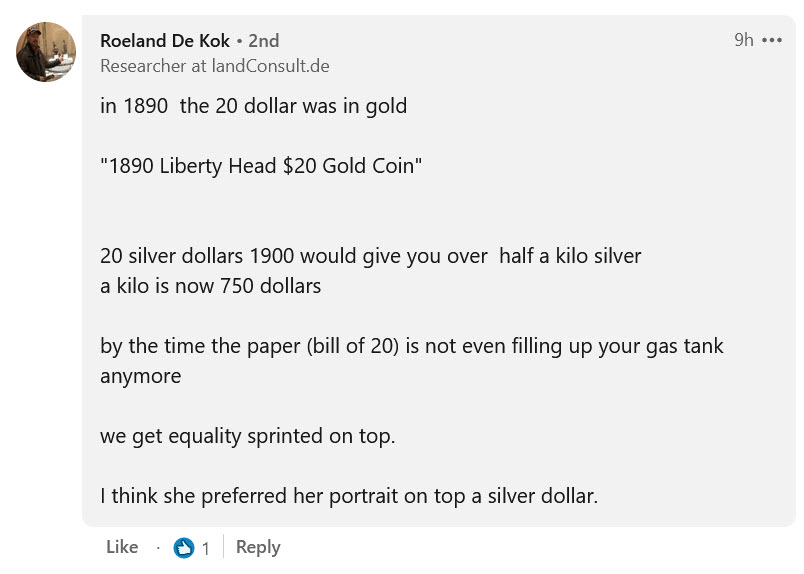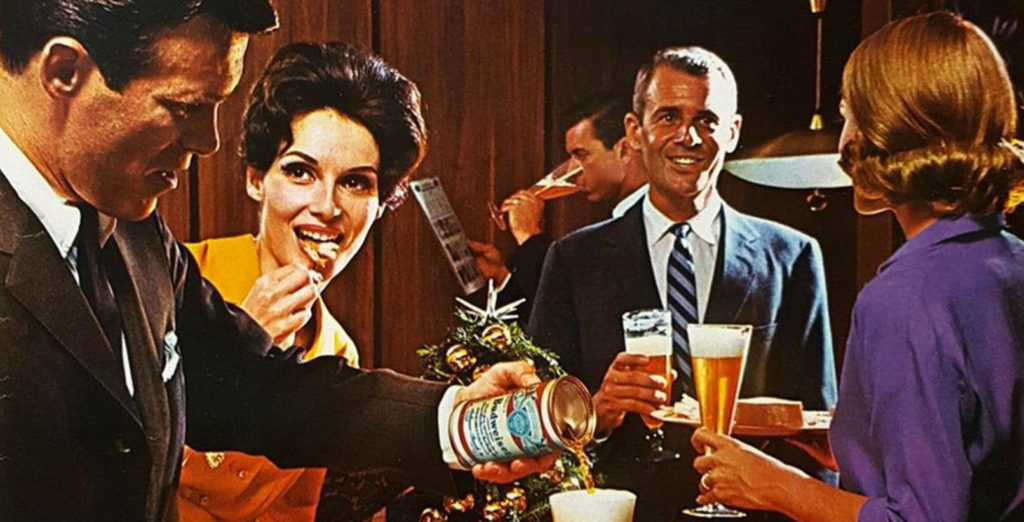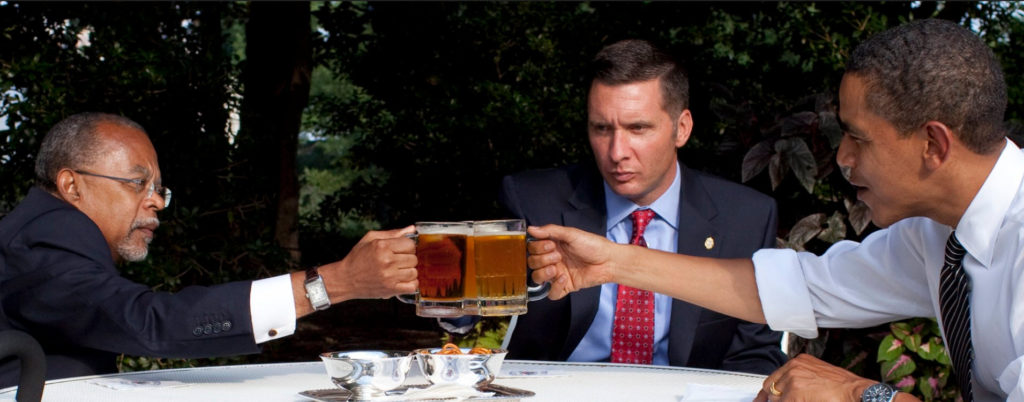Ah. Isn’t that the case?
Throughout history, nations rise when there is righteous leadership that cared for its citizens' welfare and do the greater good. When they are corrupt and self-serving, those nations fall. Learn from history because we live in a world governed by cause and effect. History will repeat itself. -Tom Tan
But no one is addressing this enormous “elephant in the room”. They are all off in some la-la-land of finger pointing outside of America. The Liberal Democrats point their fingers at Russia and blame them for the mess that America is today. The Conservative Republicans point their fingers to China, and blame them. Looked from the outside inwards, you all look like crazed maniacs.
Republicans have been gushing hatred over China, especially since Trump lost the election. Yes, there are the obvious reasons this board has mentioned many times but it seems even more deep seated. It's as if people like Laura Ingraham are addicted to their hatred. She's obsessed w/China and uses China like a Club to try to discredit anyone to the left of Adolf Hitler. I love it when she then screams about the 'Cancel Culture'. I look at her twitter feed and she's totally unhinged. She talks about China like a deprived drug addict who finally found their stash. I feel like I'm missing something. -Posted by: Christian J. Chuba | Feb 11 2021 20:04 utc | 8
Oh, but you all know all of that, don’t you?
Why is “democracy” so valuable?
It’s heavily promoted (don’t you know) that one-person, one-vote system is the pinnacle of “freedom” and “liberty” in the world. Which is rather strange as the founders of the United States said the absolute opposite.
And people are looking at these various systems of governance with a keen eye. Maybe there needs to be some changes they wonder…
Daniel Bell has put forward his views in favor of China's political meritocracy... against the one person one vote (Western Democracy model) as a mode of selection for political leaders. He has done this in two books. The China Model: Political Meritocracy and the Limits of Democracy Princeton University Press, 2015. ISBN 9781400865505. Dean of the School of Political Science and Public Administration at Shandong University and professor at Tsinghua University (Schwarzman College and Department of Philosophy). He was born in Montreal, educated at McGill and Oxford, has taught in Singapore, Hong Kong and Shanghai, and has held research fellowships at Princeton's University Center for Human Values, Stanford's Center for Advanced Study in the Behavioural Sciences and Hebrew University's Department of Political Science. Here: https://youtu.be/e63ro_suARA
Crazy, Crazy Government
The war machine is still at full throttle and has been for more than two decades. Do you realize there are now adults who have never lived during a time when the United States was not at war with a Middle Eastern nation? We are at war with Eurasia, or is it Eastasia?
It’s both, and it projects to continue for decades.
When Bill Kristol watches Star Wars movies, he roots for the Galactic Empire. The leading neocon recently caused a social media disturbance in the Force when he tweeted this predilection for the Dark Side following the debut of the final trailer for Star Wars: The Force Awakens. Kristol sees the Empire as basically a galaxy-wide extrapolation of what he has long wanted the US to have over the Earth: what he has termed "benevolent global hegemony." Kristol, founder and editor of neocon flagship magazine The Weekly Standard, responded to scandalized critics by linking to a 2002 essay from the Standard's blog that justifies even the worst of Darth Vader's atrocities. In "The Case for the Empire," Jonathan V. Last made a Kristolian argument that you can't make a "benevolent hegemony" omelet without breaking a few eggs. -SOTT
The elected elites love war at home, too. They are fomenting war among the American people, and it is breaking out. As surely as class warfare is behind the riots in the Netherlands, it is on the cusp of erupting here. It’s a strategy of divide the people into little groups. Then have the groups fight each other.

.
The elites play classes off one another. They denounce the rich as evil, and the media and the inured play along, hating all “billionaires,” as if Capitalism didn’t afford them the opportunity to have the very platforms upon which they complain.
The elites stealthily promote their lie in this way, lumping into a group both hard-working and innovative entrepreneurs who made it by the sweat of their brow and the crony capitalists they created themselves, and then call them all “rich” as if it’s an epithet.
Among the many misperceptions of the American Revolution and the resulting constitutional order is the belief that these admittedly monumental achievements created a self-sustaining system of governance. Even in times of chaos and upheaval such as those we are living through today, we have always at some level convinced ourselves that ours is a system that can withstand most any assault, foreign or domestic. We lean on a legend – that the bundle of constitutional rights guaranteed us and our revolutionary system of checks and balances will be enough by themselves to sustain liberty over the fullness of time. It’s been said, regarding any memorable occurrence, that if there’s truth and legend, go with the legend because it’s always a better story. But the truth is, while we expect that our institutions will hold under duress, Thomas Jefferson himself – among others in the founding generation – was doubtful the great experiment in liberty attained through blood, sweat, and tears would last more than a generation. He was skeptical of the sustainability of a system in which 51% of the people may take away the rights of the other 49%. Jefferson was expanding on the sentiments of fellow founder Benjamin Franklin, who when asked what form of government the framers of the Constitution had settled on, famously replied, “a republic – if you can keep it.” -Liberty Nation
They take an arbitrary monetary figure, pulled out of thin air, and set it as the Rubicon. Cross it and somehow you were luckier than most, got a break someone else never got. Yachts and airplanes are demonized, while the elected elites vacation on yachts bought by others and are ferried about in private jets paid for by others.
They accept “campaign contributions” from Wall Street, then, with a wink and nod, demonize Wall Street. Then, they print billions of dollars to prop up Wall Street; rewarding it for bringing down the economy. This keeps the contributions flowing and themselves in power.
And when people get angry about it, and march on Washington, an example is made of them. As an effigy and as a warning to others…

.
It’s all a racket.
They demonize Big Oil, Big Medicine, Big Pharma and Big Tobacco (which deserve to be demonized, surely) yet they enrich those industries with special subsidies and tax breaks and laws passed to their benefit. Their puppets in office who create those privileges are rewarded with more campaign cash and, when their time on Capitol Hill is done, cushy jobs lobbying their replacements.
Their policies destroy the middle class.

.
They preach fairness and set their pawns up as the arbiters of fairness. They create a parasite class with an entitlement mentality. Then they work to grow the parasite class to keep themselves in power by taking more and more from the wages of the middle class.
Let’s look at America, the nation of an “untouchable” oligarchy that treats the American citizenry as the sheep that serve them. Let’s remind ourselves just what we wave our “red, white, and blue” flags up high for…
Lace the air with LSD
This article was contributed by Mike Jay. It is reprinted as found. All credit to the author, and note that any editing involved went towards fitting this into the MM format.
It was during the fallout from Watergate that the American public first heard of MK-Ultra, the most notorious of the secret mind control programmes that the CIA ran through the 1950s and 1960s.
After Nixon’s men were caught breaking into the headquarters of the Democratic National Committee in June 1972, Richard Helms, then director of the CIA, refused to help with the cover-up. In February 1973, after his re-election, Nixon fired Helms and replaced him with James Schlesinger. In an initiative to regain public trust as the crisis escalated, Schlesinger announced he was ‘determined that the law shall be respected’ and that anyone aware of illegal CIA activities was obliged to report them.
Nixon was finally forced to resign in August 1974. His successor, Gerald Ford, made Nelson Rockefeller, a reliable intelligence insider, his vice president, and asked him to produce a report on the CIA’s alleged historical abuses.
Rockefeller’s report was issued in June 1975. For the most part it was vague and non-incriminating, but it did conclude that the CIA had in the past conducted ‘plainly unlawful’ investigations, including the testing of ‘potentially dangerous drugs on unsuspecting United States citizens’.
There were references to secret sites and experiments on prison inmates, and some passages that begged explanation; in one incident, ‘an employee of the Department of the Army’ had crashed to his death through a 13th-storey hotel window after being dosed with LSD. But the commission had apparently reached a dead end. All records had been destroyed, and ‘all persons directly involved … were either out of the country and not available for interview or were deceased.’
Seymour Hersh, who had already written a front-page story for the New York Times about the CIA’s illegal domestic surveillance programme, determined that the man who had fallen from the window was Frank Olson, a chemist employed by the CIA. Hersh disclosed his findings to Olson’s family, who convened a press conference and announced that they would be suing the agency.
Ford’s chief of staff, Donald Rumsfeld, was alerted to the danger by his deputy, Dick Cheney. The Olsons received a settlement of $750,000 in exchange for dropping their legal action, and were invited to the White House, where Ford made them a public apology.
As the Rockefeller report foundered, a Senate commission under the Idaho member Frank Church dredged deeper in the CIA’s records. The files were heavily redacted but one name surfaced repeatedly: Sidney Gottlieb, who appeared to have been the director of a secret chemical division within the agency.
Gottlieb, it turned out, was now in India, where he and his wife were spending their retirement working as volunteers at a leprosy hospital. The Church Committee summoned him to testify, which he did in camera, under an alias and with a guarantee of legal immunity; the press was told that no photographs of him existed.
It was the Church Committee’s report in April 1976 that brought MK-Ultra to public attention. The programme, which ran from the early 1950s through to the mid-1960s, had investigated forms of mind control that might be deployed on civilian populations.
A particular interest had been taken in LSD, which was tested on such ‘expendable’ populations as prisoners and refugees, on the general public and, extensively, on the programme’s own agents.
Many of the subjects were dosed without their knowledge or consent – including Frank Olson, who had ‘leaped to his death’ in ‘what appeared to be a serious depression’ after his Cointreau was spiked with LSD at a CIA retreat. The Church Committee concluded that the full extent of MK-Ultra’s work, especially outside the US, would never be known, since records of it had been destroyed.
As it turned out, however, there was much more to come. In the late 1970s, John Marks, a journalist who specialised in intelligence matters, filed a Freedom of Information request that uncovered a trove of 16,000 documents, most of which hadn’t been sent for shredding because they were filed as financial records. In the course of examining thousands of invoices and bills of sale, Marks and his team of researchers unearthed some unexpected gems.
The diary of George Hunter White, a dead Federal Bureau of Narcotics agent, was particularly startling. White had worked as Gottlieb’s fixer in the underworlds of New York and San Francisco, conducting drug experiments on unknowing subjects in brothels or at parties he held in CIA safehouses.
In his diary, White wrote frankly about the corruption, drugs, sex and violence in which he happily participated: ‘Where else could a red-blooded American boy lie, cheat, rape and pillage with the sanction and blessing of the All Highest?’
This was not the CIA as the American public was encouraged to imagine it: a dapper Ivy League fraternity coolly dedicated to safeguarding the nation. The picture that emerged was of a game without rules, played recklessly and with impunity by, as Stephen Kinzer characterises it, a ‘cast of obsessed chemists, cold-hearted spymasters, grim torturers, hypnotists, electr0-shockers and Nazi doctors’.
With the publication in 1978 of Marks’s The Search for the Manchurian Candidate: The CIA and Mind Control, the story took up the position it has occupied ever since at the intersection of politics, conspiracy theory, psychology, drug culture, science fiction and espionage. Kinzer retells many of Marks’s stories, but organizes them around the fuller, though still partial, biographical picture of Gottlieb that has emerged since his death in 1999. The result is a bustling narrative that sets MK-Ultra in its institutional framework of federal government, the military and the intelligence services, swerving all the while between madcap farce and grim atrocity.
The story begins during the occupation of Germany at the end of the Second World War, when agents of the Office of Strategic Services (OSS), the forerunner to the CIA, discovered that the Nazis had been designing biological weapons such as anthrax bombs, and subjecting prisoners at Dachau and Buchenwald to experiments involving drugs, lethal pathogens, toxic gases and extremes of temperature. Some of this was exposed at the Nuremberg trials; OSS officers, meanwhile, were discreetly gathering research materials for their own purposes.
Nazi Party members were officially prohibited from entering the US, but arrangements were made under a secret programme codenamed Operation Paperclip to ‘bleach’ episodes involving slavery, torture and murder from the records of scientists who might be useful to US intelligence. More than seven hundred such scientists and engineers were quietly recruited to work at Camp Detrick, Maryland, headquarters of the US Army Biological Warfare Laboratories.
The OSS was abolished by Truman in 1945, the president having decided that the US didn’t need a secret intelligence agency in peacetime. But by 1947 he had changed his mind, and the CIA was formed.
The new agency began to undertake covert operations in Eastern Europe and paid close attention to the dramatic 1949 Soviet show trial of the Hungarian priest Cardinal József Mindszenty, in which Mindszenty confessed to absurd conspiracies such as attempting to steal the crown jewels and to re-establish the Austro-Hungarian empire, while swaying, staring blankly and reciting his testimony as if by rote. To those who knew him, it seemed as if Mindszenty had become a different person.
To the CIA, it was evidence that the Soviet Union had developed new techniques for personality modification and mind control. There were similar reports from China, where the Communist Party allegedly referred to such techniques as hsi nao, ‘washing the brain’.
In 1951, Allen Dulles, a former OSS officer, was appointed the CIA’s deputy director for plans. Dulles, who was convinced that the future would belong to the world power that could master the new ‘brainwashing’ technologies, was instrumental in shifting the agency’s research priorities from chemical and biological warfare to the inner battlefield of the mind. He had been one of the men responsible for drafting the National Security Act, the law that brought the CIA into being, permitting it to use ‘all appropriate methods’ in its operations. In 1950 the CIA had launched Project Bluebird to investigate the use of chemical and biological agents to control the minds of individuals.
When Dulles got hold of the programme, he renamed it Artichoke, and it was expanded to study the effects of exposure to gases, irradiation by infrared or ultraviolet light, high and low pressure environments, sonic torture, alteration of diet, electric shocks and a variety of psychological techniques, hypnosis chief among them.
The experiments were carried out on defectors, refugees and prisoners of war. These were the ‘expendables’ – people whose disappearance wouldn’t draw attention. The work was carried out at what would now be called ‘black sites’; it is in this period, as Kinzer points out, that the CIA began the habit of detaining people in other countries, beyond the reach of US law.
By early 1952 there were Artichoke teams in France, occupied Germany, Japan and South Korea; more were added later. Directives were issued specifying that interrogations be carried out in a ‘safe house or safe area’, with an adjoining room for recording equipment, and a bathroom, which might be found necessary thanks to the effects that ‘Artichoke techniques’ could have on subjects.
Kinzer tells the story of one site in particular, at Oberursel, a ‘sleepy German town’ north of Frankfurt. During the war the Nazis had used it as a transit camp for captured enemy pilots. The US army took it over in 1946, renamed it Camp King and used it for ‘special interrogations’, involving torture, beatings and drug injections, carried out by Counterintelligence Corps officers known as ‘rough boys’. The disposal of bodies was, one CIA officer recalled, ‘no problem’.
The ‘rough boys’ were too unrefined for Bluebird and Artichoke work. And the work was so secret that even Camp King wouldn’t do. In 1951 the CIA acquired a large house just a few miles away – Villa Schuster, named for the Jewish family that had lived there until the 1930s – and converted it for use by specialist teams flown over from the US to carry out their experiments without external supervision.
They did, however, benefit from the guidance of Camp King’s staff doctor, Walter Schreiber, the former surgeon general of the Nazi army, who had overseen research at concentration camps in which prisoners were frozen, injected with hallucinogens, and cut open to chart the progress of gangrene.
When he was given a contract to work in the US under Operation Paperclip (it didn’t work out, and after a scandal he ended up in Argentina), Schreiber was replaced at Camp King by another war criminal, Kurt Blome, the Nazis’ director of research into biological warfare, who had tested nerve gases and viruses on concentration camp inmates.
Sidney Gottlieb had been working for nearly ten years in government laboratories, and was a research chemist at Camp Detrick, when Dulles chose him to lead the CIA’s mind control research programme.
Gottlieb was born with a club foot, and had been rejected for war service; Kinzer writes that this had left him with a ‘store of pent-up patriotic fervour’. In other respects, he was a conspicuous outsider in the patrician ranks of the CIA: a Jewish immigrant from the Bronx who had made his way via City College, ‘the Harvard of the proletariat’, to a doctorate in biochemistry.
In private he was a nonconformist, living in a cabin in the Virginia backwoods with his wife, Margaret, who had grown up among Presbyterian missionaries.
As chief of the newly constituted Chemical Division of the Technical Services Staff, Gottlieb set about expanding and refining Dulles’s programme. The trials on ‘expendables’, in his estimation, had thus far produced nothing of value.
He set up new experiments to test the effects of electrical shocks, neurosurgery, sensory distortion and hypnosis, but his attention was increasingly taken up with mind-altering drugs.
His team tested cocaine on mental patients, heroin on students and cannabis on themselves; they also investigated amphetamines, mescaline, barbiturates and sodium pentothal, variously to disinhibit, disorientate, act as a ‘truth serum’, wipe memories or induce states of terror.
The experiments were carried out at Artichoke sites around the world. Kinzer quotes an earlier study which recorded Gottlieb’s trips to Tokyo, where four Japanese suspected of working for the Russians were injected with ‘a variety of depressants and stimulants’, then shot and dumped at sea; to Seoul, where 25 North Korean prisoners of war were given the same treatment; and to Munich, where ‘scores of “expendables”’ were given massive amounts of drugs in a series of failed experiments, after which they were ‘killed and their bodies burned’.
On becoming president in 1953, Eisenhower made Dulles director of the CIA. In a memo written at the time and since declassified, Dulles’s newly appointed chief of operations at the Directorate of Plans, Richard Helms, set out the terms of a new programme of research into ‘covert chemical and biological warfare’.
One aim in particular was singled out: ‘the development of a chemical material which causes a non-toxic aberrant mental state, the specific nature of which can be reasonably well predicted for each individual. This material could potentially aid in discrediting individuals, eliciting information, implanting suggestion and other forms of mental control.’ The programme was given a new codename: MK-Ultra.
Gottlieb’s budget was freed from the usual financial constraints, his research from external clearance or oversight. From time to time there were attempts to bring the CIA to heel. In 1953, for example, the US secretary of defence, Charles Wilson, issued a memo stating that all experiments involving volunteers required their consent, in compliance with the Nuremberg Code.
But this clearly wasn’t going to fly with the men in charge of finding ways to force individuals to provide information against their will, erase their memories or change their personalities.
In 1956 a proposal that Congress monitor CIA activities was firmly quashed by the White House. The assumption, as one CIA officer expressed it later, was: ‘We’re at war, so anything is justified. We’re smarter than most people, we operate in secret, we have access to intelligence, and we know what the real threats are. No one else does.’
From April 1953, when Dulles formally approved MK-Ultra, Gottlieb operated with impunity and on a much larger scale. Each of the programme’s many elements was called a ‘subproject’ and given a number.
Subproject 5 contracted a researcher at the University of Minnesota to test the use of hypnosis to induce anxiety, thwart lie detectors and increase cognitive capacity;
subproject 124 tested the use of carbon dioxide to induce trances;
subproject 63 studied the ‘use of alcohol as a social phenomenon’;
subproject 140, conducted at a hospital in San Francisco, tested the potential psychoactive effects of thyroid-related hormones. Scores of subprojects were devoted to investigating the use of drugs, alone or in combination with other techniques, to manipulate behaviour.
Kinzer has fun describing subproject 4: the use of a celebrity stage magician, John Mulholland, to teach CIA agents the techniques of misdirection and sleight of hand, the better to distract targets while drugging them. The manual Mulholland produced resurfaced in 2007, the ‘only full-length MK-Ultra document known to have survived intact’.
Artichoke work had been carried out in CIA safehouses abroad. Under MK-Ultra, the work was brought home. Two adjoining apartments were purchased at 81 Bedford Street in New York (subproject 3). George Hunter White was recruited by Gottlieb in June 1953 to trawl Greenwich Village posing ‘alternately as a merchant seaman or a bohemian artist’ and gathering up ‘drug users, petty criminals and others who could be relied on not to complain about what had happened to them’.
At one of the apartments in Bedford Street, White would serve his guests drinks surreptitiously laced with drugs, while in the other Gottlieb’s men filmed the effects through a mirror.
Two years later, in Operation Midnight Climax (subproject 42), White set up another safehouse in San Francisco, this time as a brothel, so that Gottlieb could gather evidence of ‘how people behave during and after sex’.
Gottlieb’s particular preoccupation was with a new psychoactive drug, LSD. (In 1951 he had asked Harold Abramson, a physician on his team, to supervise him in a self-experiment with the drug. Gottlieb reported ‘an out-of-bodyness … a sense of well-being and euphoria’.)
Some of his colleagues were interested in the potential effects of dispersing it on the battlefield, but Gottlieb believed LSD was the drug most likely, as Kinzer puts it, ‘to give initiates a way to control other human beings’ – a doomsday weapon in the new field of ‘brain warfare’. At first, there was a problem getting hold of it in sufficient quantities. A Swiss company, Sandoz, held the patent, and was said to be sitting on a stockpile of ten kilograms, a ‘fantastically large amount’.
In an attempt to corner the world’s supply of the drug, Dulles signed off on the $240,000 it would cost to buy everything Sandoz had, and sent two of his officers to Switzerland to bring it back. But when they arrived, it turned out the intelligence was wrong; the ten kilograms, they discovered, was actually ten grams. So Gottlieb still had a supply problem. He paid an American pharmaceutical company, Eli Lilly, to devise a way of synthesising LSD from scratch.
That was part of subproject 6.
It took longer than a year, but by the end of 1954 Eli Lilly was in a position to produce the drug in ‘tonnage quantities’. The CIA, Kinzer writes, ‘was its main customer’.
The research into the effects of LSD extended way beyond observations at 81 Bedford Street. Gottlieb found a willing partner in Harris Isbell, the director of research at the Addiction Research Centre in Lexington, Kentucky.
The hospital ‘functioned more like a prison’, Kinzer writes, with a cohort of mostly African American inmates – a new group of ‘expendables’ – on whom Isbell could experiment at will. Gottlieb was interested in how much LSD was needed to ‘shatter the mind …
…leaving a void into which new impulses or even a new personality could be implanted’.
Isbell’s patients were fed escalating doses, some of them for days and weeks on end. Another enthusiastic collaborator, Carl Pfeiffer at Emory University, as part of his work on subproject 47, administered LSD to twenty inmates of the Atlanta Federal Penitentiary nearly every day for 15 months. Robert Hyde at the Boston Psychopathic Hospital paid hundreds of students from Emerson, Harvard and MIT $15 each to drink a vial of liquid that might induce an ‘altered state’; in the aftermath, one of the subjects hanged herself in a clinic bathroom.
As well as these knowing allies – and thanks to sympathizers at the National Institute of Mental Health and a network of philanthropic foundations willing to act as fronts for the dispersal of agency money – Gottlieb was also able to recruit scientists who had no idea they were working for the CIA. Kinzer gives a list of more than thirty universities, institutes and hospitals, many of them among the most renowned in America, that received funding to carry out Gottlieb’s research programme.
In the late 1950s, MK-Ultra entered its most baroque phase, as Gottlieb was tasked with coming up with ways to dispose of foreign leaders. His Heath Robinson schemes included using an aerosol to lace the air with LSD in the Havana studio where Fidel Castro made his radio broadcasts, sprinkling Castro’s boots with thallium salts to make his beard fall out and contaminating his cigars with botulinum. At one point Gottlieb turned up in Congo with a poison kit, ready for use in a CIA plot to kill Patrice Lumumba. None of these plans came to fruition. They resembled the popular fiction with which they had always been in dialogue.
Kinzer points out that the CIA’s belief, in the late 1940s, that the communists had discovered the key to mind control, was conditioned by the ‘ubiquitous fantasy’ of this possibility in American popular culture, movies in particular, from film representations of Svengali, Dracula and Frankenstein, to George Cukor’s Gaslight (1944), the Sherlock Holmes movie The Woman in Green (1945) and Invasion of the Bodysnatchers (1956). The border between fiction and reality in the early years of the Cold War was blurred further as novelists began to mine the seam of science and skulduggery.
A pulp thriller from 1955, The Splintered Man, featured a CIA agent subjected to a nightmarish interrogation under LSD in East Berlin; it ended with an exhortation to US intelligence not to be left playing catch-up in the battle for the mind. The Bond movies led CIA officers to investigate the real-life feasibility of Q’s gadgets.
Richard Condon’s book The Manchurian Candidate (1959), in which a brainwashed sleeper agent is triggered by post-hypnotic suggestion to make an attempt on the life of an American presidential candidate, caught the zeitgeist best of all.
John Frankenheimer’s film adaptation came out in 1962; a year later it was seen as an eerie prefiguring of the Kennedy assassination. In fiction, the reality of covert mind control was taken for granted: if it wasn’t real, where was the story? Yet even as mind control technologies became a staple of popular culture in the 1960s, the faith of Gottlieb and his team in their potential was fading.
As the CIA psychologist John Gittinger later recalled, by 1963 ‘it was at least proven to my satisfaction that “brainwashing” so-called – as some kind of esoteric device where drugs or mind-altering kinds of conditions and so forth were used – did not exist … The Manchurian Candidate, as a movie, really set us back a long time, because it made something impossible look plausible.’
Privately, Gottlieb was at last coming to the same conclusion. He had abundantly demonstrated something that nobody had ever seriously doubted: that drugs, electroshock and other mental tortures could shatter minds and wipe memories. But he had been unable to put new personalities or memories in their place.
As Kinzer says, when Gottlieb started out on MK-Ultra, there were only two possibilities: ‘Either there is no such thing as a mind control drug or there is indeed such a thing and it is waiting to be discovered.’ The first was unthinkable: Gottlieb ‘had been hired to explore, not to give up’. So he pressed on through the 1950s with seemingly unshakeable conviction.
But ‘as of 1960,’ he later admitted in a memo, ‘no effective knockout pill, truth serum, aphrodisiac or recruitment pill was known to exist.’ Gottlieb’s master weapon, LSD, made subjects highly suggestible, but their beliefs and behaviors had proved impossible to control.
Yet his operations continued to expand. By the late 1960s he was running more behavioral laboratories than ever and his experiments were just as ambitious, not to say horrifying. In Saigon in 1968 a CIA team implanted electrodes in the brains of three Vietcong prisoners.
They were given knives and locked together in a room for a week, while the agents tried to rouse them to violence with radio signals from their remote-control handsets. They didn’t succeed. The team returned to Washington and, just as in Project Artichoke twenty years earlier, the prisoners were shot and burned.
Then came Watergate, the loss of Richard Helms’s protection, and John Schlesinger’s initiatives to detoxify the CIA. Before his departure in 1973, Helms ordered that all MK-Ultra’s records be destroyed. Gottlieb retired quietly later that year, first to his cabin in Virginia, then to India with Margaret to take up voluntary work. By 1977 the tide had turned decisively against him. During the Church Committee hearings the new director of the CIA, Stansfield Turner, assured Senator Edward Kennedy that ‘it is totally abhorrent to me to think of using a human being as a guinea pig …
I am not here to pass judgment on any of my predecessors, but I can assure you that this is totally beyond the pale.’ Summoned back to give evidence to the committee, Gottlieb testified that MK-Ultra had been a project ‘of the utmost urgency … to investigate whether and how it was possible to modify an individual’s behaviour by covert means’. Under cross-examination he displayed a vagueness that for some recalled Jozsef Mindszenty’s show trial, shot through with a streak of paranoia: ‘I feel victimised … My name is selectively left on released documents where all or most others are deleted.’
Gottlieb retreated to a large eco-home of his own design in the Blue Ridge mountains, where he died in 1999. He was harried by lawsuits to the end, and the cause of his death was never confirmed; many suspected suicide. There was no consensus about how, ultimately, he judged himself. To his neighbours, he seemed at peace: ‘an old hippie’, as one recalled, who rose early to meditate, wore sandals and cycled into town to collect his mail.
Others thought he must be in denial: it was as if he had ‘lost his former self’, the Washington Post reported, ‘walking backwards, sweeping his trail clean with a branch’. ‘Gottlieb was living as if he was in an ashram in India,’ wrote Seymour Hersh, who visited him in retirement. ‘He was trying to absolve himself, to expiate. If he’d been Catholic, he would have gone to a monastery.’ John Marks wasn’t so sure that Gottlieb was troubled by his conscience. ‘He was unquestionably a patriot,’ Marks told an obituarist. Gottlieb ‘never did what he did for inhumane reasons.
He thought he was doing exactly what was needed. And in the context of the time, who could argue?’ Kinzer wonders whether the contrast between his folksy lifestyle and his CIA work was as jarring as it seemed: both could be seen as expressions of a desire to live unconstrained by the usual rules and limits. Gottlieb, he concludes, ‘was not a sadist, but he might as well have been’.
Kinzer floats the argument, as others have before him, that MK-Ultra inadvertently gave rise to the psychedelic counterculture, as LSD ‘escaped from the CIA’s control’. The dots are there for all to join: Ken Kesey and Allen Ginsberg first took LSD in CIA-funded experiments; a covert CIA operative was present on the trip to Mexico in 1957 when Gordon Wasson encountered the ‘magic mushroom’; Gottlieb’s physician, Harold Abramson, became an early proponent of LSD psychotherapy. But there are other ways of telling the story that don’t involve the CIA at all. The most conspicuous influence on the emerging psychedelic culture was Aldous Huxley’s The Doors of Perception, published to great acclaim in 1954. Ginsberg, like many of his generation, had previously taken psychedelics on his own initiative.
From its base in Switzerland, Sandoz, as well as supplying the CIA with LSD, was at the same time giving it away free to interested psychiatrists; one such was the Hollywood therapist Oscar Janiger, whose celebrity clientele, including Cary Grant, Anaïs Nin and Jack Nicholson, spread the word enthusiastically in magazine interviews, essays and movie scripts. Timothy Leary was turned on to LSD by maverick enthusiasts who acquired the drug directly from Sandoz, as Leary himself did for his experiments at Harvard.
What seems remarkable today is not how much influence MK-Ultra had, but how little. The methods of coercive interrogation used more recently, such as those at Abu Ghraib or Bagram, haven’t owed much to the scientific techniques Gottlieb was investigating. Instead, they have more in common with what the ‘rough boys’ were up to at black sites in postwar Germany before Gottlieb’s men arrived.
MK-Ultra’s enduring influence is in popular fiction, where many of its ideas came from in the first place. Covert mind control programmes, usually run by the CIA, are a familiar plot device across the spectrum, from literary fiction (Thomas Pynchon, David Foster Wallace) to mass-market movies (The Ipcress File, The Parallax View, Jacob’s Ladder, the Bourne franchise) and TV (The X-Files, Stranger Things).
The story is always the same: mind control is real, and those who know its secrets operate with impunity. The second assumption reflects historical truth, and resonates still in a post-Watergate world. The first was a chimera, and by the time the Cold War reached its apex, Gottlieb and his colleagues no longer believed it themselves.
Some thoughts
Aren’t you proud to be an American!
Look here, if this is how the government treats the citizenry, and it’s “not really bad“, then what happens when things get bad?
Lacing the citizens with LSD and other mind altering chemicals are only the things that we KNOW ABOUT. What about the things that we don’t know?
You know, America IS GOING to pick a fight…
Whether it is Russia or China, most Americans haven’t an idea. But here, I will tell you all the “secret” that the American “news” is hiding from you; it’s BOTH simultaneously.
Thursday, February 04, 2021, 22:52 China, Russia stress adherence to non-interference By Xinhua China and Russia said Thursday that the principle of non-interference in other countries' internal affairs, one of the basic norms governing international relations, should be upheld. In a phone conversation between Chinese State Councilor and Foreign Minister Wang Yi and Russian Foreign Minister Sergei Lavrov, the two sides also pledged to jointly preserve global and regional strategic stability. ... The two heads of state have also agreed to celebrate this year the 20th anniversary of the signing of the China-Russia Treaty of Good-Neighborliness and Friendly Cooperation, pointing out the direction for deepening the comprehensive strategic partnership of coordination between the two countries, Wang said. Both sides should take this opportunity to add new dimensions to this important treaty and send a clear message to the world that the two countries will safeguard the security of themselves and along their peripheries, he added. http://www.chinadailyhk.com/article/156995 -Posted by: Mao | Feb 11 2021 21:38 utc | 20
Yupper.
It’s not gonna be “goat herders” and “mud huts” getting blown up. It’s not going to be some American marines or SEAL’s taking HELO jumps into Chinese territory or an amphibious landing on one of the atolls surrounding China. It’s not going to be “US Navy sitting off the coast of China and launching cruse missile and plinking at targets”.
It’s gonna be on a completely different level. And if you all think that China is all blue-clad bicycle-riding peasants, you are going to be in for a big shock.
.
And, let’s have another look. You all aren’t gonna see these images on Rush Limbaugh, Hal Turner, Drudge Report, CNN, or FOX news. You will not see them on the BBC, the ABC, or on “60 minutes”.
Americans need to believe that they are invincible. They need to believe that they are the strongest, the best, and that no one would dare fight back.
That is the only way that the American citizenry won’t revolt at the prospect of another global war. Especially one that involved biological and nuclear weapons of mass destruction.
…don’t you know.
Conclusion
Any nation that poisons it’s people with LSD or forces them to take chemical injections, while picking fights with very powerful, nuclear armed, nations is not a place where you want to live. And while the “news” make a lot of “noise” about all these people wanting to come to America for “freedom” and “democracy”, the ones that are actually coming are the illiterate, the destitute and the impoverished. In their minds, ANYTHING is better than the lives that they are leaving.

.
I cannot predict the future.
However, the behaviors of the United States elite (the ruler class) are indicative of some severe faults. Faults, mind you, that are not easily corrected. And thus you all can expect some “fallout” to come your way from their failures in governance.
America is not a strong nation any longer. It is a “ripe” nation. It is a tree heavy with juicy fruit, and just waiting to be harvested.
This reminds me of the cities that thought that they could fight off Genghis Khan with their knights in shining armor. Nope. It’s did not work out good for them. And it worked out even worse for their families back in the cities. Women and children suffered a fate that no one should endure.
Rather than submit, the Abbasid caliph challenged the Mongols to attempt to storm his city, if they dared. The nomadic army from Asia—led by Hulagu Khan, one of Genghis Khan’s grandsons—did indeed dare. Doing what they are most famous for, the Mongols thrashed Baghdad. In 10 days of unremitting violence and destruction, Baghdad and its inhabitants were completely and utterly vanquished. Almost without exception, the population was either put to the sword or sold into slavery. The River Tigris ran red—to cite one of the most over-quoted, and overwrought phrases in history—with the blood of slaughtered men, women, and children. After this, every building of note in Baghdad—including mosques, palaces, and markets—was utterly destroyed, among them the world-famous House of Wisdom. Hundreds of thousands of priceless manuscripts and books were tossed into the river, clogging the arterial waterway with so many texts, according to eyewitnesses, that soldiers could ride on horseback from one side to the other. Of course, the river turned from red to black with ink. -Great courses daily
America and Americans have never suffered defeat. The closest was the Southern States during the “Reconstruction Period”. But even that, many still kept their language, were able to keep their records and heirlooms, and build up a life for themselves. They never suffered a complete SACK of their cities, their societies, their cultures and their identity. They do not realize what a real defeat looks like.
Do you want to see similar posts?
I hope that you found this post curious. Please take care. You can view other similar posts in my SHTF Index, here…
SHTF ArticlesArticles & Links
You’ll not find any big banners or popups here talking about cookies and privacy notices. There are no ads on this site (aside from the hosting ads – a necessary evil). Functionally and fundamentally, I just don’t make money off of this blog. It is NOT monetized. Finally, I don’t track you because I just don’t care to.
- You can start reading the articles by going HERE.
- You can visit the Index Page HERE to explore by article subject.
- You can also ask the author some questions. You can go HERE to find out how to go about this.
- You can find out more about the author HERE.
- If you have concerns or complaints, you can go HERE.
- If you want to make a donation, you can go HERE.
Please kindly help me out in this effort. There is a lot of effort that goes into this disclosure. I could use all the financial support that anyone could provide. Thank you.






















